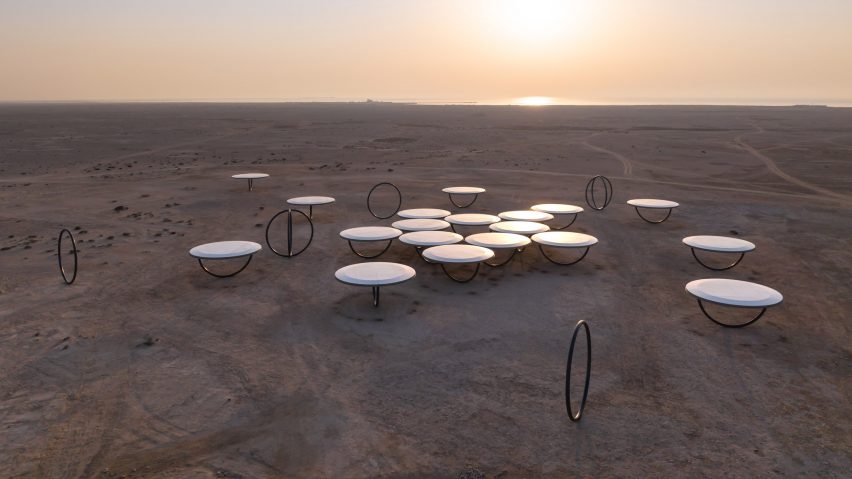
Symmetry and reflection define Qatar desert installation by Olafur Eliasson
Danish-Icelandic artist Olafur Eliasson has created an installation named Shadows Travelling on the Sea of the Day comprised of twenty circular structures during the 2022 FIFA World Cup in Qatar .
Created in collaboration with Qatar Museums, Eliasson's installation joins over 100 commissioned artworks installed across Qatar that are on view across the country over the course of the tournament.
Situated near UNESCO World Heritage Site Al Zubarah, which is in the northwest of Qatar, the installation was designed to "bring light to the significance" of the heritage site.
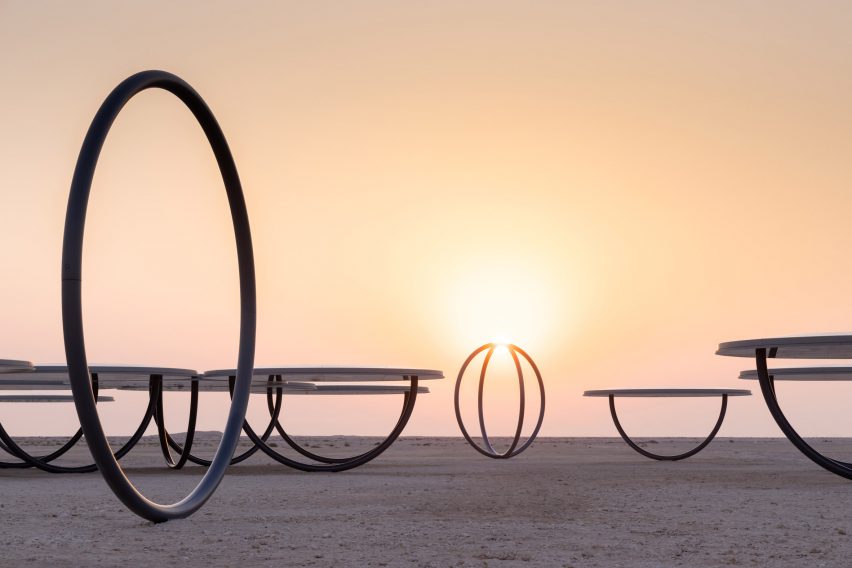
"Shadows Travelling on the Sea of the Day, 2022, is an invitation to resync with the planet," explained Eliasson.
"It is a celebration of everything being in and moving through the desert site north of Doha at the time of your visit – animals, plants, and human beings; stories, traditions, and cultural artefacts; wind, sunlight, air and shimmering heat," he continued.
"The installation of these important artworks brings to light the significance of Qatar's nearby heritage sites, which Qatar Museums is responsible for preserving and protecting," added Qatar Museums.
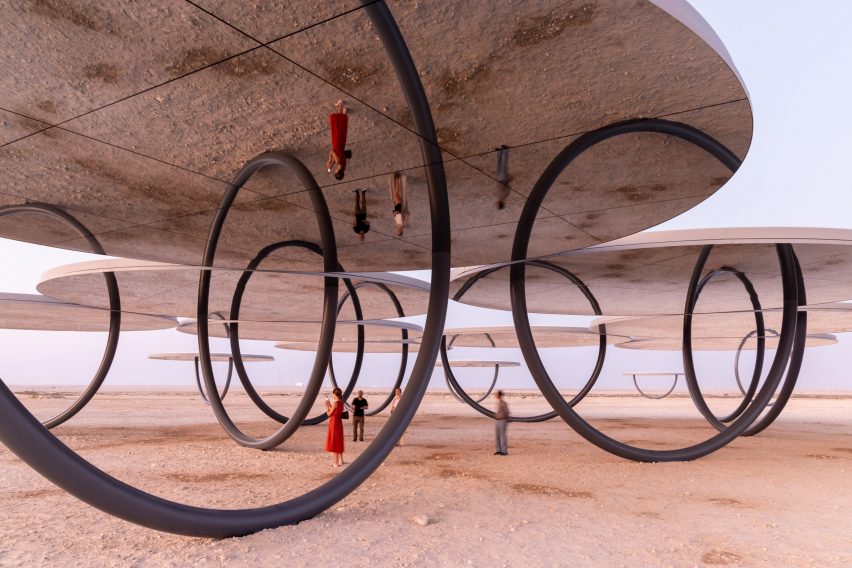
Visitors can navigate their way through the steel and fibreglass rings and stand beneath the shelters, where they'll be able to see their own reflection in mirrored panels on the underside of their tops. The mirrors also reflect the surrounding sandy desert.
"On arriving at the installation, looking up at the mirrored undersides, you will come to realise that you are, in fact, looking down – at the earth and at yourself," said Qatar Museums.
"Shadows Travelling on the Sea of the Day continues the Danish-Icelandic artist's longstanding exploration into the interplay of human perception and the natural world."
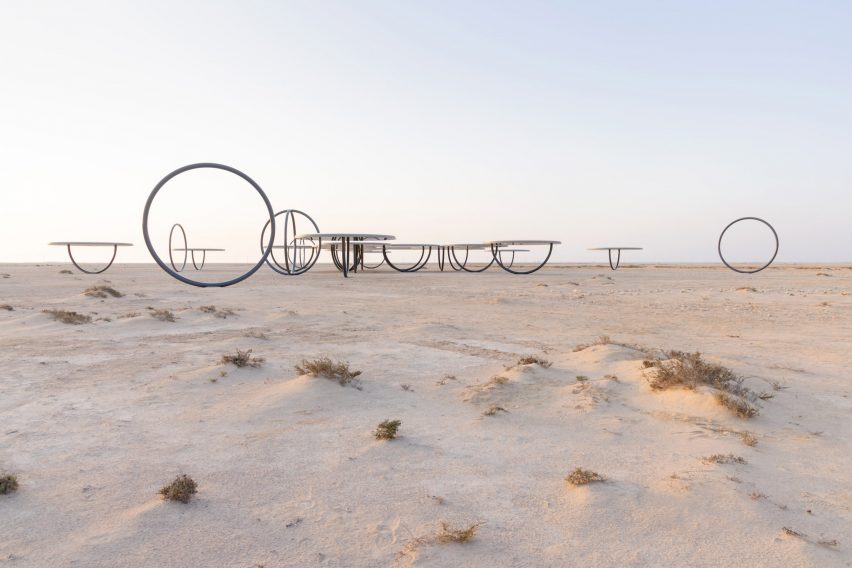
Eliasson arranged 10 of the covered shelters in the middle of the installation to look like a symmetrical five-pointed star face when viewed from above – referencing the designs found in medieval Islamic patterns.
Other structures were formed of two interconnected rings or simple single rings that are fixed to the ground.
"The principles behind such patterns were recently discovered by mathematicians in the West, may have informed some of the sophisticated designs found in Islamic cultures since medieval times," explained Qatar Museums.
According to Eliasson, the installation created "a sea of interconnections" – hence the name Shadows Travelling on the Sea of the Day – between individuals and the landscape.
"Above and below, sand envelops you, together with anyone else sharing the space," he said. "It is a kind of reality check of your connectedness to the ground," Eliasson added.
"The mirrors connect and perfect what is physically distinct and partial, linking the actual surroundings with the reflected space and creating a sea of interconnections."
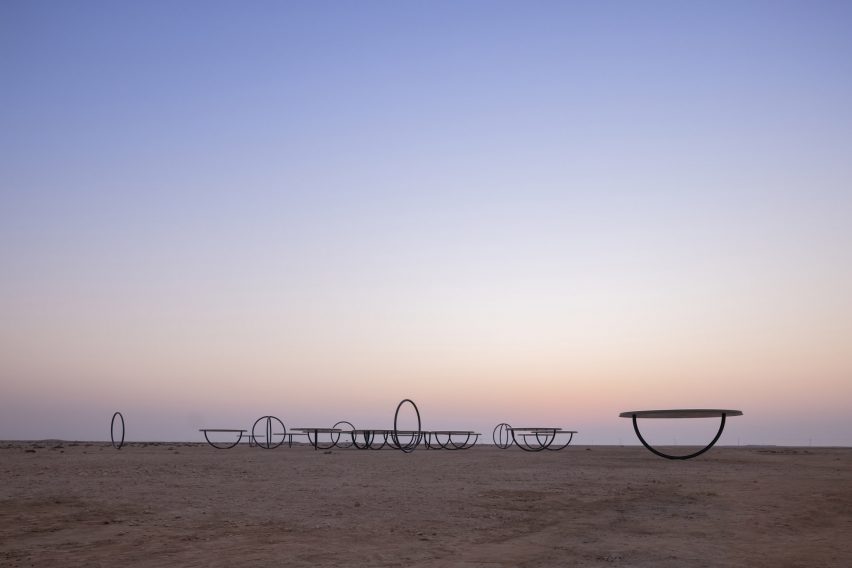
Qatar has invested large amounts into its artistic program in order to attract visitors to the 2022 FIFA World Cup, which runs until 18 December. Dezeen rounded up 10 cultural buildings completed in Qatar ahead of the 2022 World Cup.
Meanwhile, architectural photographer Iwan Baan photographed a selection of public artworks that are on display in the middle eastern country, by artists and designers including Faye Toogood and Richard Serra.
The country has been widely criticised for its human rights record and the conditions experienced by migrant workers in the run up to the World Cup. The Guardian reported that 6,500 migrant workers had died in the country since it won the right to host the tournament in 2010. Although according to football's governing body FIFA there have only been 37 deaths connected to the construction of the World Cup stadiums.
Shadows Travelling on the Sea of the Day is currently on show in Al Zubara. See Dezeen Events Guide for an up-to-date list of architecture and design events taking place around the world.
The photography is by Iwan Baan, courtesy of Qatar Museums.